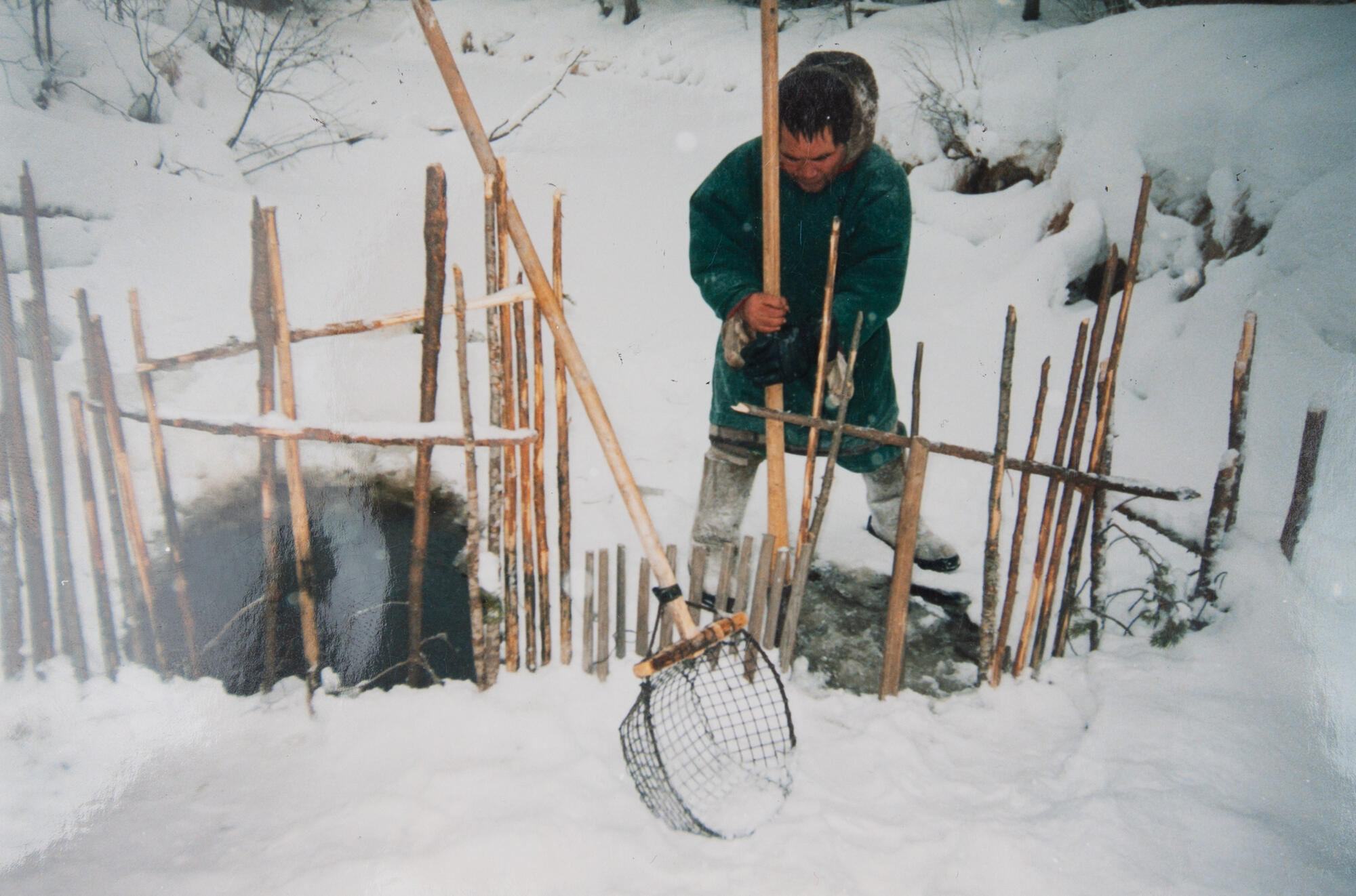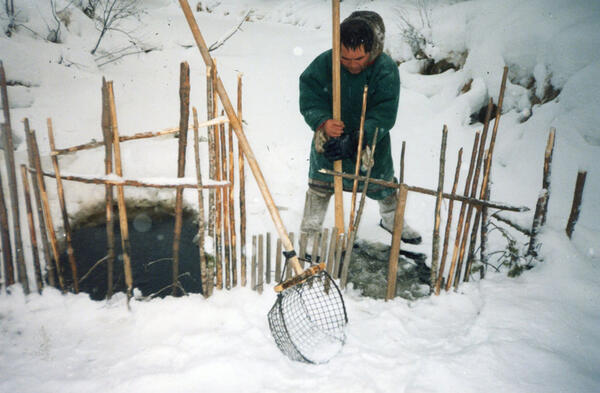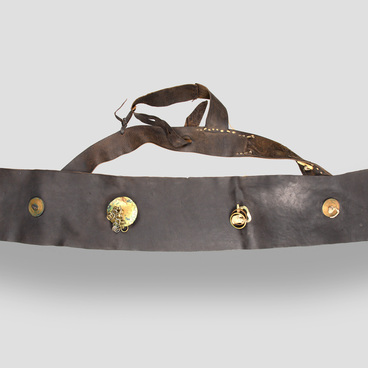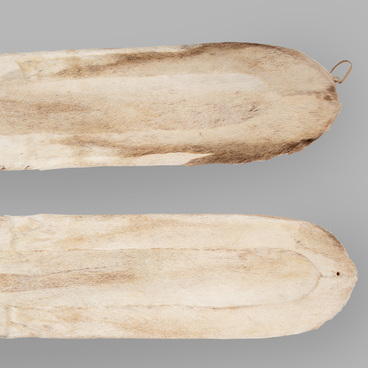Fishing is one of the traditional activities of the northern peoples along with hunting and reindeer herding. The history of fishing goes back millions of years, and Neanderthals were the first fishermen. People began to fish with their hands, and later invented a lot of devices — from sharp harpoons and nets to spinning. The culture of fishing depends on the climate and fish species. In conditions of extremely low temperatures of the Far North, fishing has always been a difficult and laborious task.
Fishermen fenced off the lake, which appeared after the river flooded, from the channel. The fences were placed at the beginning of the fishing season, when fish was to spawn. In some parts of the fence, passages were left through which the fish rose upstream. In August, the passages were closed, and people began to fish in order to prepare supplies for the winter. This allowed the families of the Forest Nenets to have fresh fish in their diet in summer, autumn and winter.
Fishing muzzles — ancient wicker traps — were placed in the gaps between the sections of the fence. The catch could range from a few fish to 10 kilograms. Each family equipped a special place for fishing, which they checked every few days. The water in the hole quickly froze, so the ice chips had to be scooped out with a wicker scoop. Before the advent of factory-made mesh, the scoop was woven from hemp thread. The instrument could have a long or short handle, and only a physically strong person could handle him.
Clothing for anglers had to be durable, comfortable and practical. Fishermen still use the traditional clothes of the Forest Nenets today: a fur malitsa with a hood and fur shoes called kisy. The malitsa resembles a loose knee-length shirt, which is tied with a belt to keep the wearer warm. A hood is sewn to the malitsa, replacing the hat. To save the fur malitsa, the fishermen put on a shirt made of cloth or dense fabric on top.
The Nenets have always fished during the appropriate season. One of the old ways of catching fish was fencing off or using wooden nets. Portable fences made of poles were driven with a pointed end into the river bottom. The Forest Nenets tied the poles together with willow bark, which was resistant to moisture, so the tackle was strong and durable.
Fishermen fenced off the lake, which appeared after the river flooded, from the channel. The fences were placed at the beginning of the fishing season, when fish was to spawn. In some parts of the fence, passages were left through which the fish rose upstream. In August, the passages were closed, and people began to fish in order to prepare supplies for the winter. This allowed the families of the Forest Nenets to have fresh fish in their diet in summer, autumn and winter.
Fishing muzzles — ancient wicker traps — were placed in the gaps between the sections of the fence. The catch could range from a few fish to 10 kilograms. Each family equipped a special place for fishing, which they checked every few days. The water in the hole quickly froze, so the ice chips had to be scooped out with a wicker scoop. Before the advent of factory-made mesh, the scoop was woven from hemp thread. The instrument could have a long or short handle, and only a physically strong person could handle him.
Clothing for anglers had to be durable, comfortable and practical. Fishermen still use the traditional clothes of the Forest Nenets today: a fur malitsa with a hood and fur shoes called kisy. The malitsa resembles a loose knee-length shirt, which is tied with a belt to keep the wearer warm. A hood is sewn to the malitsa, replacing the hat. To save the fur malitsa, the fishermen put on a shirt made of cloth or dense fabric on top.



